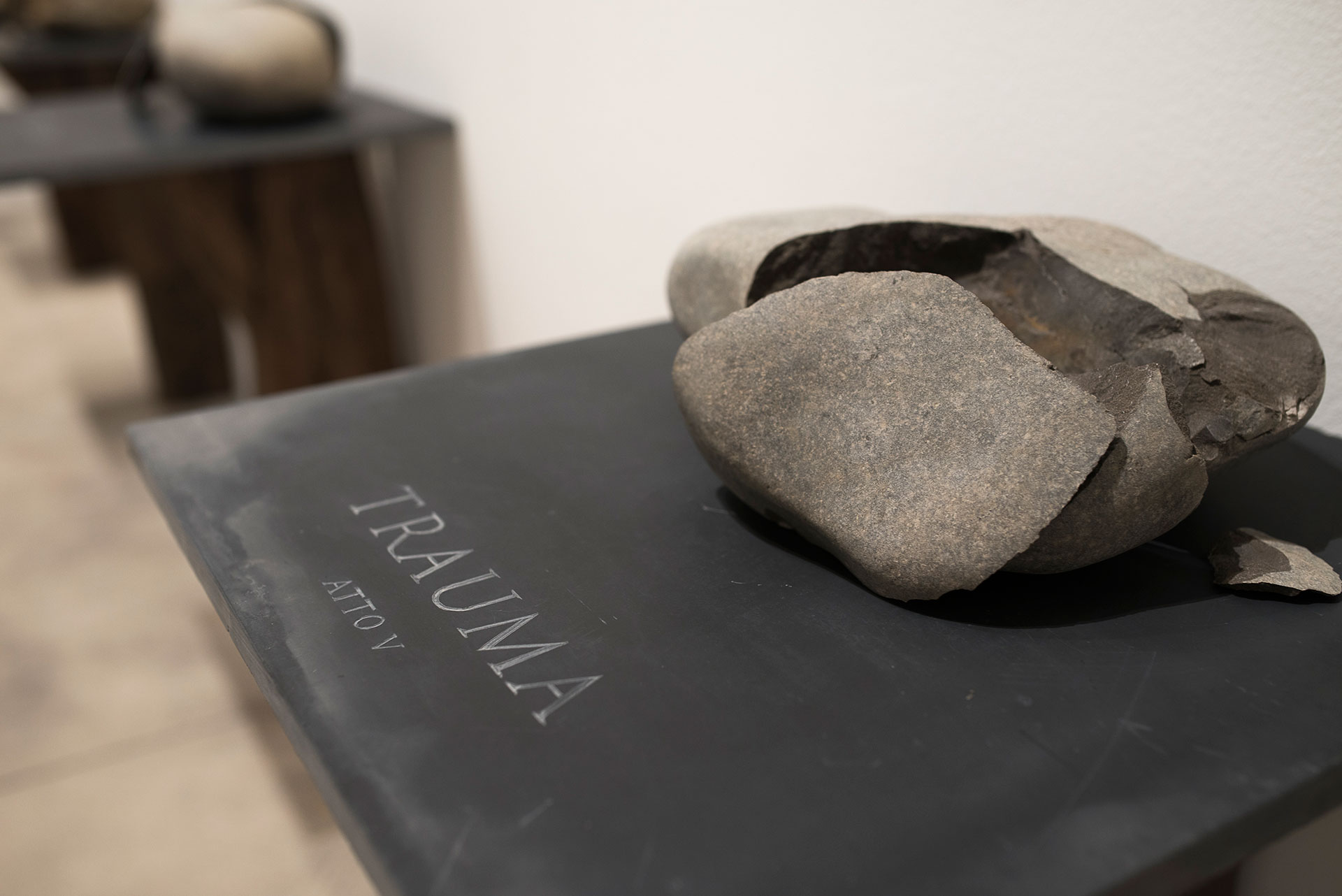
218 a.C.
solo show at
Galeria Riccardo Crespi
Milan2015
Unlike in his previous experience in Italy, where it was the land that provided the starting point for an attempt to retie the threads of a remote family origin, the artist made use of a more general cue here: beginning with a period of residence-study in the province of Piacenza, Moscheta has investigated the local territory, exploring the natural landscape and sifting through the region’s museums to find out everything he could about a particular event in history. In 218 BC, during the Second Punic War, the Carthaginian general Hannibal defeated the Romans on the banks of the river Trebbia, in part thanks to his celebrated crossing of the Alps with 37 elephants. The specific episode becomes – as often happens with this artist who operates at times with the eye of the archaeologist, at others with that of the geographer or the biologist – the point of departure for a series of considerations on the relationship between humanity and nature, as well as on the perception of time and memory.
The Trebbia Valley has preserved the traces of a past that is remote and yet still alive: in the stones of the Trauma series it is possible to hypothesize a memory of the events of that ancient war. The locally collected pebbles, patiently polished by the river, have been shattered by Moscheta, putting on stage – and in fact the cataloguing is divided into five “acts” – the eruption of human brutality into the natural process, disrupting the slow course of change through a violent and immediate destruction.
The aspect of archaeological cataloguing is also present in the works Fossil #1 and Fossil #2. Composed of the remains of trees found on the banks of the Trebbia, they recall fossils of animals trapped in slate, but also living shoots in the stone. And we find it too in Trophy, a drawing in graphite on black PVC in which the tusk of an elephant recalls the booty of war and Linnaean taxonomy.
The exhibition is completed by several mixed-media works from the Revolution series. Taking a photograph as his cue, Moscheta has used paint and collage to allude to the relationship between chaos and order: the wilderness that takes back the space once inhabited by human beings. The artist’s classificatory intent find expression through the insertion of spurious materials – Pantone cross-references, sheets of graph paper, cuttings from old registers – and refers directly to the attempt to regularise and control natural “revolution”.

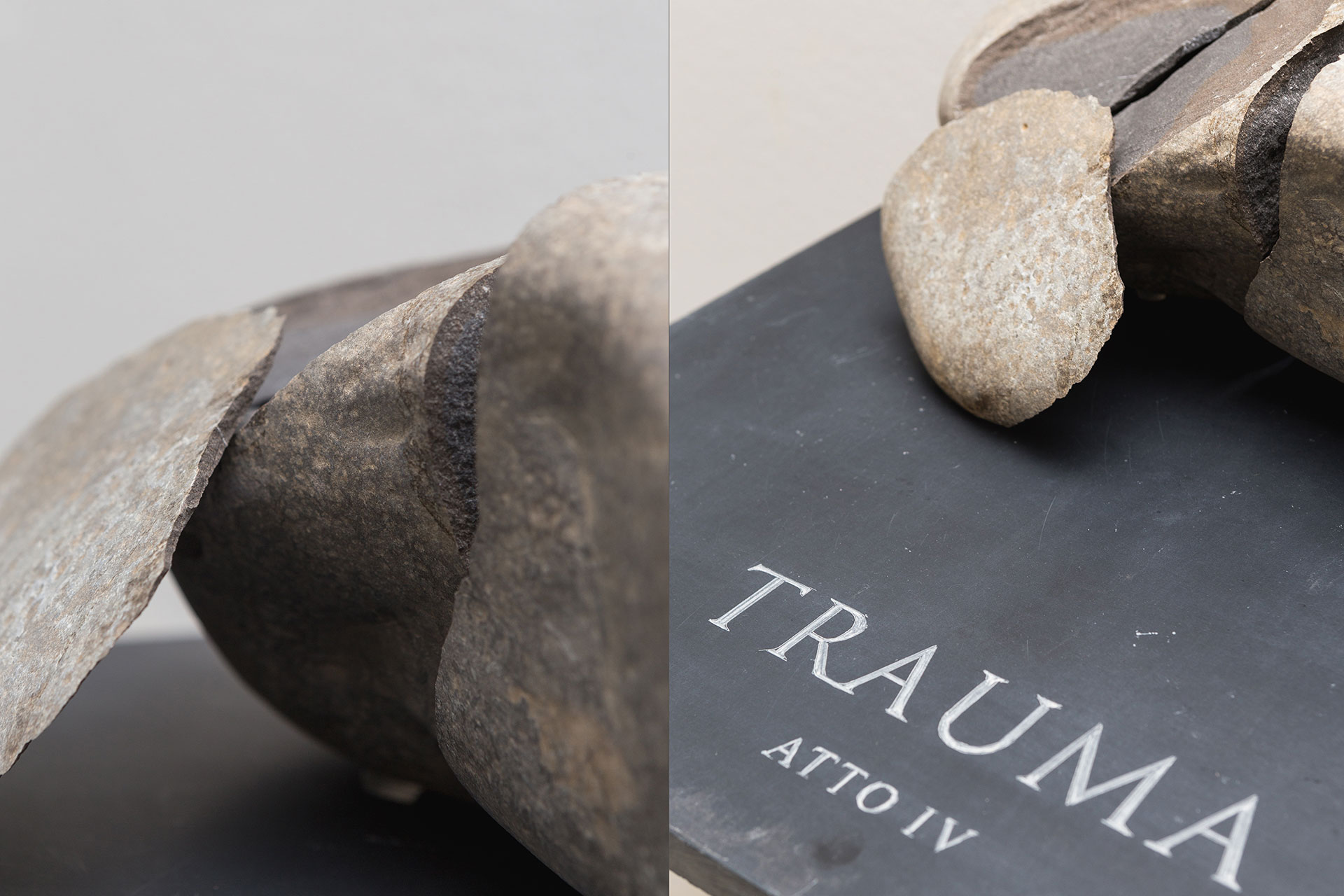
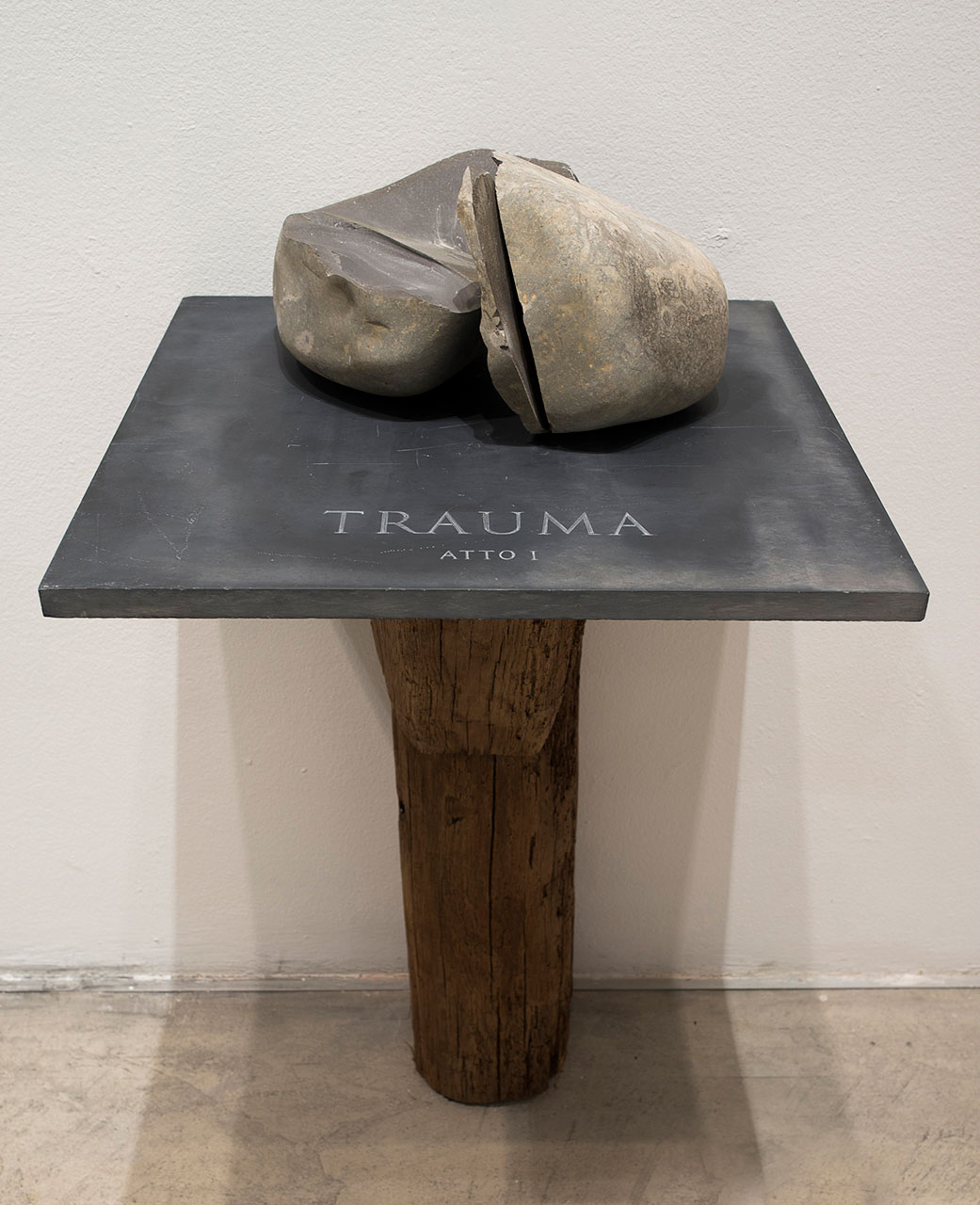
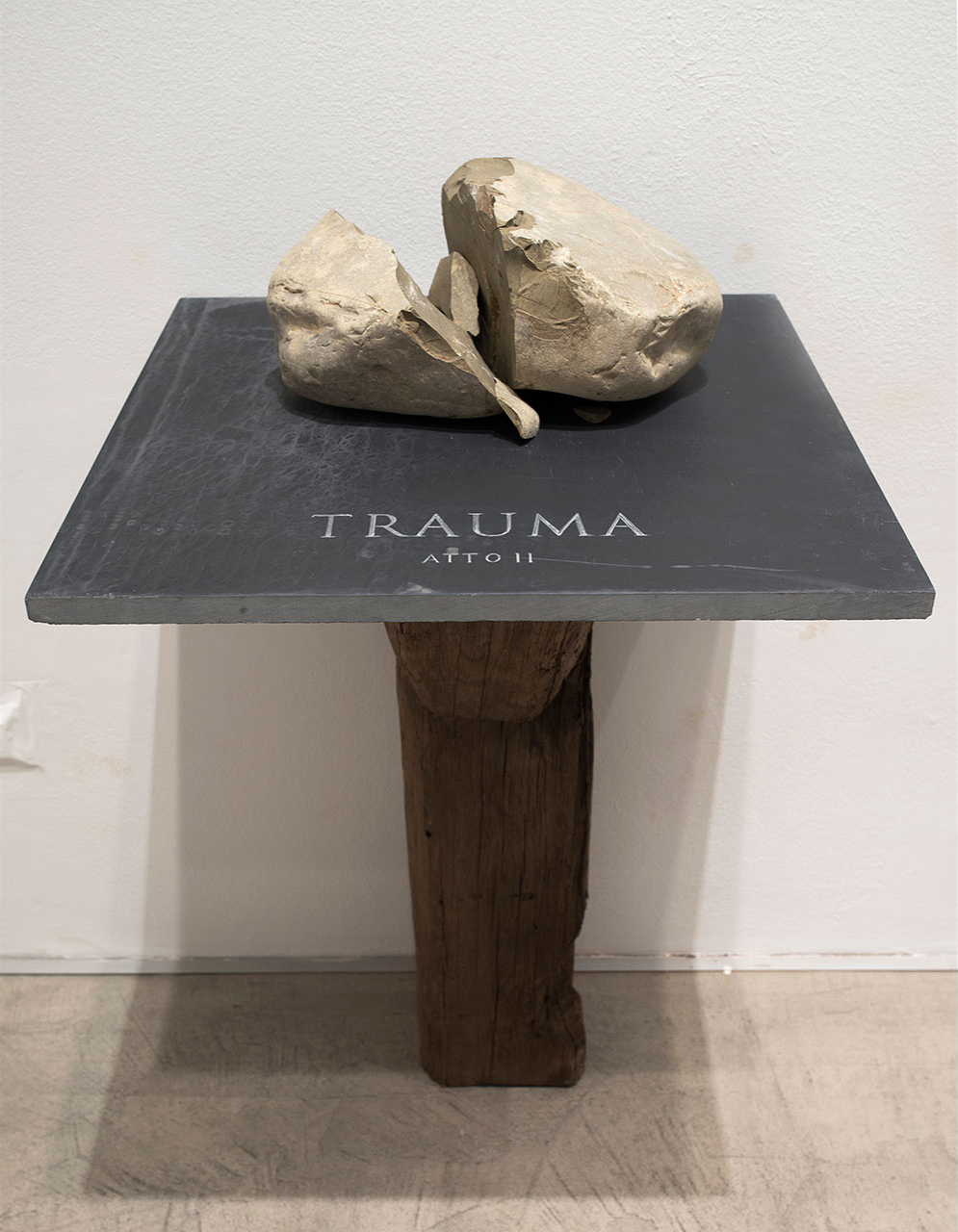







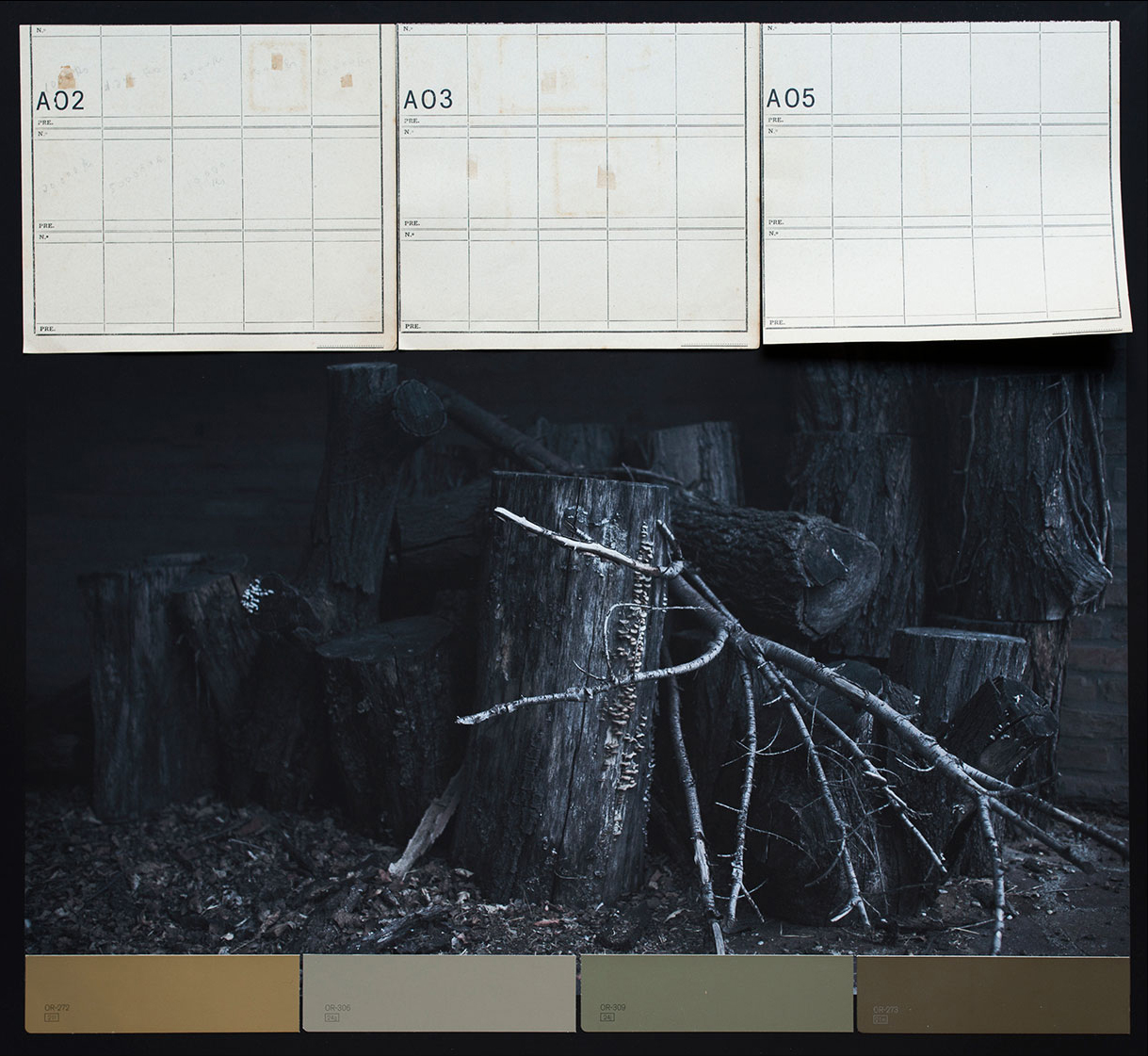

[photos Marco Cappelletti]
218 a. C.
exposição individual na Galeria Riccardo Crespi
Milão2015
Ao contrário de sua experiência anterior na Itália, onde era a terra que forneceu o ponto de partida para uma tentativa de reatar os fios de uma origem familiar remota, o artista fez uso de uma sugestão mais geral aqui: começando com um período de residência de estudo na província de Piacenza, Moscheta investigou o território local, a explorar a paisagem natural e peneirar museus da região para descobrir tudo o que podia sobre um determinado evento na história. Em 218 aC, durante a Segunda Guerra Púnica, o general cartaginês Hannibal derrotou os romanos, nas margens do rio Trebbia, em parte graças à sua passagem célebre dos Alpes com 37 elefantes. O episódio específico torna-se - como muitas vezes acontece com este artista que opera às vezes com o olhar do arqueólogo, em outros com a do geógrafo ou o biólogo - o ponto de partida para uma série de considerações sobre a relação entre a humanidade e a natureza, bem como sobre a percepção do tempo e da memória.
O Vale do Rio Trebbia preservou os vestígios de um passado que é remoto e ainda vivo: nas pedras da série Trauma é possível levantar a hipótese de uma memória dos acontecimentos daquela guerra antiga. Os seixos recolhidos localmente, pacientemente polidas pelo rio, foram quebradas por Moscheta, colocando no palco - e de fato a catalogação é dividida em cinco "actos" - a erupção da brutalidade humana sobre o processo natural, interrompendo o curso lento da mudança através de uma destruição violenta e imediata.
O Vale do Rio Trebbia preservou os vestígios de um passado que é remoto e ainda vivo: nas pedras da série Trauma é possível levantar a hipótese de uma memória dos acontecimentos daquela guerra antiga. Os seixos recolhidos localmente, pacientemente polidas pelo rio, foram quebradas por Moscheta, colocando no palco - e de fato a catalogação é dividida em cinco "actos" - a erupção da brutalidade humana sobre o processo natural, interrompendo o curso lento da mudança através de uma destruição violenta e imediata.
O aspecto de catalogação arqueológico também está presente nas obras Fossil #1 e Fossil #2 . Composto pelos restos de árvores encontradas nas margens do Trebbia, eles recordam fósseis de animais presos em ardósia, mas também brotos vivos saindo da pedra. Encontramos essa idéia também em Troféu , um desenho em grafite sobre PVC preto em que a presa de um elefante lembra um espólio de guerra juntamente com a taxonomia de Linnaeus.
A exposição é completada por várias obras com técnicas variadas como a série Revolução. Tendo a fotografia como a sua base, Moscheta usou tinta e colagem para aludir à relação entre o caos e a ordem: o natureza selvagem que toma de volta o espaço antes habitado por seres humanos. A intenção classificatória do artista encontra sua expressão através da inserção de materiais espúrios - tabelas Pantone, letraset e folhas de registros antigos - e refere-se diretamente à tentativa de regularizar e controlar a “revolução" natural.
A exposição é completada por várias obras com técnicas variadas como a série Revolução. Tendo a fotografia como a sua base, Moscheta usou tinta e colagem para aludir à relação entre o caos e a ordem: o natureza selvagem que toma de volta o espaço antes habitado por seres humanos. A intenção classificatória do artista encontra sua expressão através da inserção de materiais espúrios - tabelas Pantone, letraset e folhas de registros antigos - e refere-se diretamente à tentativa de regularizar e controlar a “revolução" natural.